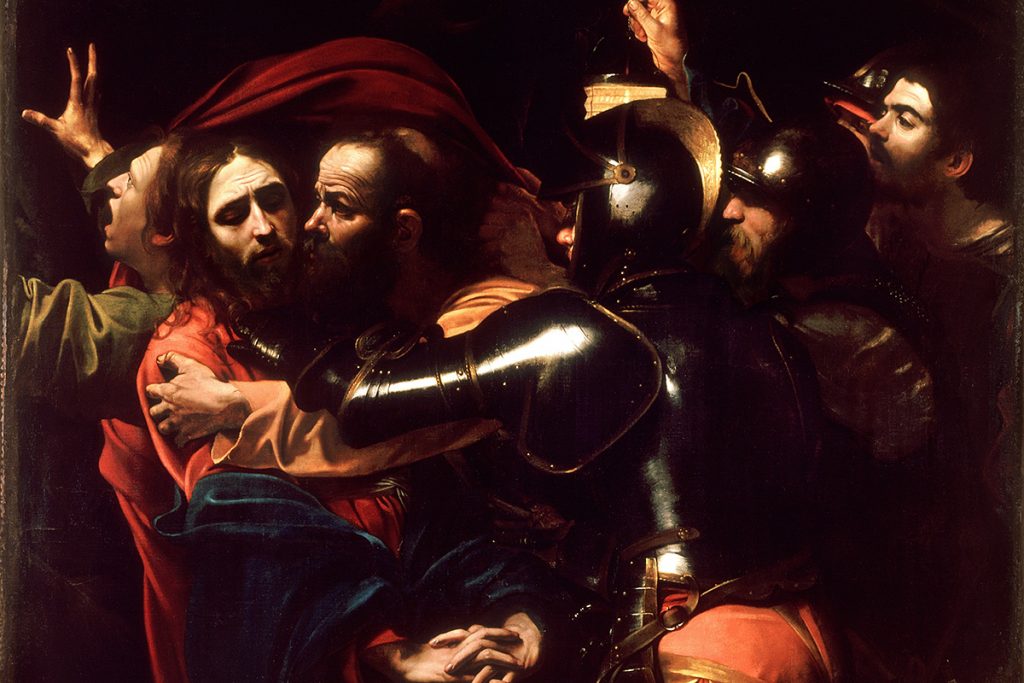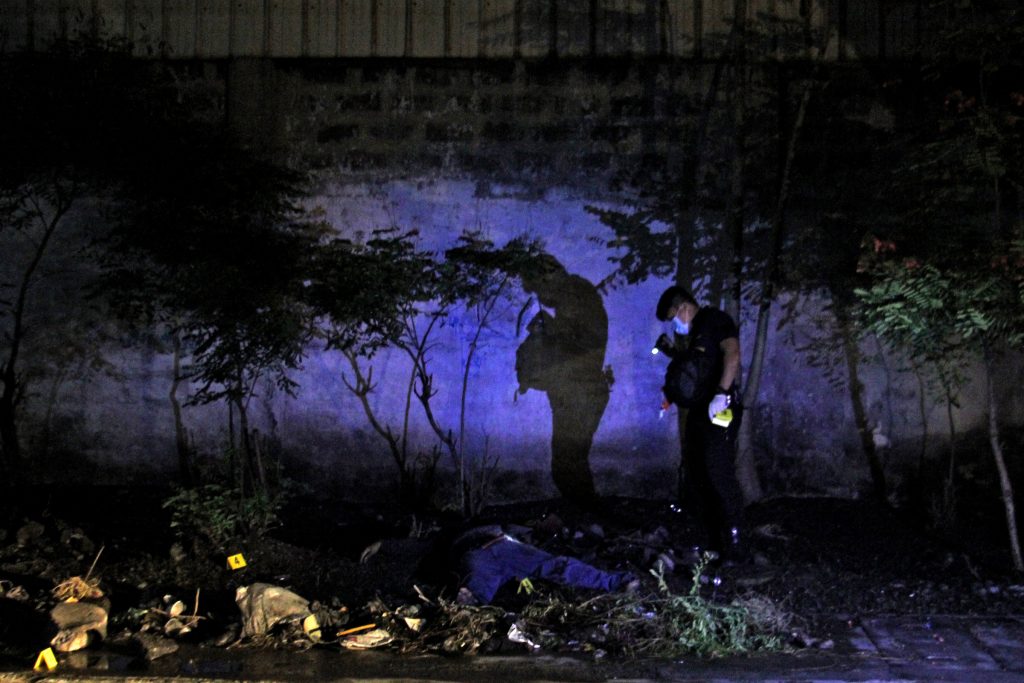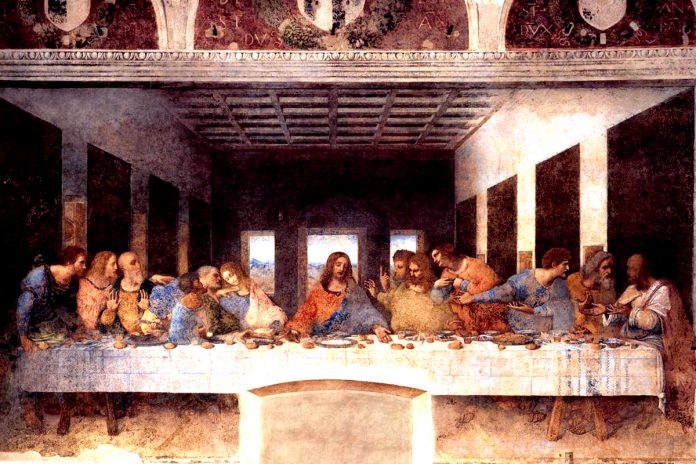Some of you might find what I am going to say in this piece a little too out of whack.
But on the eve of the second season of the Enhanced Community Quarantine, I stumbled on a Facebook post by a poet-friend on the tale behind Leonardo da Vinci’s The Last Supper.
The painting, done largely in oil, was commissioned during the late 15th century by none other than Ludovico Sforza, the Duke of Milan and Da Vinci’s patron. The fresco, however badly damaged in time, is lodged at the refectory of the Convent of Santa Maria delle Grazie.
It was interesting to note that two other copies of Da Vinci’s painting had been made: the second by Da Vinci’s earlier friend and mentor, Andrea Solari (on canvas), and the third by Cesare da Sesto. The two paintings can now be viewed at the Leonardo da Vinci Museum in Belgium and the Church of Saint Ambrogio in Switzerland, respectively.
While so many interesting facets of the original fresco were revealed by the documentary, what grabbed my attention was Da Vinci’s theme for his version of The Last Supper.
As a backdrop, Jesus Christ and the apostle’s last supper stood as a favorite theme among Renaissance artists for centuries. It was—and still is—the most famous supper known to man.
Even before agreeing to paint the fresco, there already was the work of Giotto di Bondone during the Gothic/Proto-Renaissance period. There was also Siennese artist Duccio di Bouninsegna’s Last Supper masterpiece commissioned by the Sienna Cathedral in 1325. Another masterwork came from the hands of Andrea del Castagno at Sant’Apollonia Convent in Florence in the 15th century.
But it was Domenico Ghirlandajo’s The Last Supper, found in the San Marco Monastery in Florence, that would apparently inspire and influence Da Vinci’s chef-d’oeuvre in Milan.
While many of the earlier Last Supper paintings featured the supper itself, according to the documentary, what made Da Vinci’s work different from the rest was his choice to highlight the betrayal of Jesus Christ by Judas Iscariot and the effect it had on the disciples.
Da Vinci allegedly wanted his work to be filled with “action” and “emotion,” thereby creating a scene where the disciples showed sorrow, revulsion, even rage seconds after the betrayal.
The scene’s most profound value comes in the act of the betrayal itself: it happened at the most intimate of the Jewish traditions—the feast—and the announcement that the Messiah was to give up his life for the redemption of humanity. This speaks volumes of what mankind, even in the face of the Savior, was and is capable of doing.
At that most private and sacrosanct of all fellowships, so inviolable that it was regarded sacred by many, there betrayal reared its ugly head.

Fast-forward to blood-soaked, pandemic-stricken Philippines, year 2021. It seems for every grave betrayal a string of deaths follows.
On the night I decided to write this piece, it was Palm Sunday and the 76th birthday of the president, Pamantik-Kilusang Mayo Uno vice-chairperson Dandy Miguel was shot and killed by yet unknown assailants on his way home to Asia 1, Canlubang in Calamba, Laguna.
This happened exactly three weeks after the so-called Bloody Sunday where nine activists—Manny Asuncion of Bagong Alyansang Makabayan, Anna Marie Evangelista and Ariel Evangelista of Batangas, among others—fell in separate police raids which hunted them down as “terrorists”.
They are just some of the little over 30,000 who were murdered under Duterte’s war on drugs, the draconian Anti-Terrorism Law and anti-communist campaign. Let’s not even talk of lawyers who were killed under this administration’s ruthless leadership: 61 under Duterte as compared to 49 from Ferdinand Marcos to Benigno Aquino III.
The Supreme Court finally came out with a strong statement on the assault on lawyers: “To threaten our judges and our lawyers is no less than an assault on the judiciary. To assault the judiciary is to shake the very bedrock on which the rule of law stands. This cannot be allowed in a civilized society like ours.”
While Duterte’s army of social media trolls, including statements from Malacañang, continually deny the allegations that Duterte had ordered the murders, one report by The Associated Press explained it this way: “The brash-talking Duterte […] has repeatedly threatened suspects with death and ordered law enforcement to shoot suspects who threaten them. Military and police officers have also been suspected of carrying out attacks and threatening lawyers and judges perceived as supportive of communist guerrillas.”
The nine activists killed on separate raids on Bloody Sunday were, in fact, gunned down shortly after Duterte, in a meeting with members of the NTF-ECLAC in Cagayan de Oro City, said, referring to “communists,” “If there’s an encounter and you see them armed, kill! Kill them! Don’t mind human rights! I will be the one to go to prison, I don’t have any qualms. Make sure you really kill them, and finish them off if they are alive.”
What has all this got to do with Da Vinci’s The Last Supper?

Mulling over the things which had happened in the last five years, I felt there was more than just a passing resemblance between the last supper and what we are forced to endure today.
Jesus’ last supper with his disciples, which happened on the eve of the Passover celebrations, was in itself a herald of the sufferings and redemption for which the meal was but a mere shadow. It was a fellowship, a private and intimate gathering of like minds, which Judas used to betray the Savior.
Our laws and the Constitution, on the other hand, are our own version of that intimate gathering as a collective citizenry, the Bill of Rights being the single most enduring lifeline of which we are called to partake. There, Filipinos come as one, in equal terms under the law, the same Bill of Rights Duterte has chosen to betray for his own gain in the last five years.
Duterte’s betrayal of our Constitution cost the nation the lives of tens of thousands of Filipinos falsely tagged as either drug addicts, communists or terrorists. Jesus himself suffered the same brutality when he was falsely tried, beaten, tortured and later executed under the hands of the Sanhedrin and the Roman empire.
Duterte’s mishandling of the Covid-19 pandemic seems to be just another avenue to expand the number of deaths, which, as of this writing, has reached a little over 13,000. His refusal to implement a meticulous program of contact tracing has left our medical and scientific experts with little choice but to recommend another lockdown.
If he had not botched this from the beginning, we wouldn’t be in this situation. Question is: is this deliberate?
While I believe firmly that one state-sanctioned murder is one too many, no person lives or dies in vain. Just as the Savior’s death paved the way to humanity’s redemption, there seems to be some proof that the cries of Duterte’s victims are finally reaching the ears of what once was a largely apathetic public.
Today, more and more voices are rising against the murders and the mediocre handling of the pandemic. From private corporations, the entertainment industry, our venerable colleges and universities, to the poorest of the poor, more and more are speaking out—online and offline.
In fact, some believe that a number of officers in the military are beginning to break the barrier of tradition if only to speak out. The Supreme Court’s recent statement against the killings of lawyers, albeit rare, is proof of this shift in political milieu.
Moreover, #DutertePalpak has been topping Twitter’s list of viral posts for days. And if philosopher Hannah Arendt’s evaluation of state violence is true, that “Violence appears where power is in jeopardy,” then we know this administration is seeing the likelihood of their luck finally running out.
Don’t get me wrong. I want the killings to stop right this very second. I have penned more pieces on EJKs than any other topic since Duterte sat as president. All I’m saying is this: what Duterte may have inflicted on the public as a way to spread fear and garner control is getting the opposite effect.
This Holy Week, let’s recall the days when Christianity was an outlawed faith, its Messiah falsely accused and killed by a tyrannical empire, and his disciples the target of torture and state-sanctioned murder.
The same disciples who were scattered into all the world to spread the good news: that their Savior did not die in vain.
He lives.
Joel Pablo Salud is an editor, journalist and the author of several books of fiction and political nonfiction. He is currently the chair of the Philippine Center of International PEN’s Writers in Prison Committee. The views and opinions expressed in this article are those of the author and do not necessarily reflect the official editorial position of LiCAS.news.









